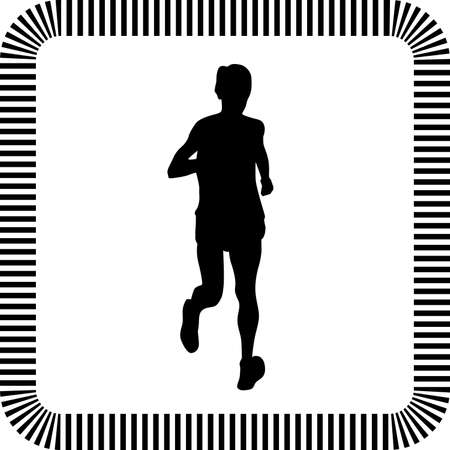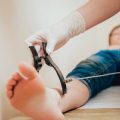1. Origins of Manual Therapy in America
Manual therapy has deep roots in American physical therapy, blending a mix of indigenous healing traditions and European techniques. Before modern physical therapy was established, Native American communities across North America practiced hands-on healing methods. These included joint manipulation, massage, and other touch-based therapies that were passed down through generations. Early settlers and immigrants from Europe brought their own styles of manual therapy, such as bone-setting from England and Swedish massage techniques.
Indigenous Healing Traditions
Native American healers used a variety of manual approaches to address musculoskeletal pain and promote wellness. Their methods often focused on the belief that balance within the body is key to good health. These practices included:
- Joint alignment using gentle manipulation
- Massage with natural oils or herbal remedies
- Pressure point techniques to relieve tension
European Influences
As the United States grew, European immigrants introduced new manual therapy concepts. The following table shows some key techniques brought to America by different cultures:
Origin |
Technique Introduced |
Description |
|---|---|---|
| England | Bone-setting | Manual adjustment of bones and joints to restore alignment and function. |
| Sweden | Swedish Massage | A system of soft tissue manipulation aimed at improving circulation and reducing muscle tension. |
| Germany/Austria | Physical Culture Movement | Incorporated exercise, movement, and hands-on bodywork for overall health. |
The Foundation of American Manual Therapy Practices
The merging of indigenous and European traditions formed the basis for early manual therapy in the U.S. Practitioners combined these hands-on skills with a growing understanding of anatomy and physiology. By the late 19th century, these influences set the stage for what would later become formalized physical therapy education and practice in America.
2. The Rise of Physical Therapy as a Profession
The Birth of Physical Therapy During World War I
The roots of physical therapy in the United States can be traced back to World War I. With thousands of soldiers returning home with injuries, there was an urgent need for effective rehabilitation. This period saw the emergence of “reconstruction aides”—primarily women—who were trained to help wounded soldiers regain mobility and function. These early practitioners used manual therapy techniques such as massage, stretching, and joint mobilization to treat musculoskeletal injuries.
Key Figures and Institutions
| Name | Contribution |
|---|---|
| Mary McMillan | Often called the “Mother of Physical Therapy” in America, she helped standardize training and practice, and became the first president of the American Women’s Physical Therapeutic Association. |
| Marguerite Sanderson | Directed the first military training program for reconstruction aides during WWI. |
| Walter Reed General Hospital | Became a major center for training and practice in manual therapy techniques. |
Institutional Growth and Standardization
After WWI, the demand for skilled physical therapists continued to grow. Hospitals began establishing dedicated departments for rehabilitation, focusing on restoring movement through hands-on care. In 1921, the American Women’s Physical Therapeutic Association was founded (now the American Physical Therapy Association), which played a crucial role in setting educational standards and promoting research into new treatment methods, including manual therapy.
The Integration of Manual Therapy into Clinical Practice
Manual therapy started becoming a central component of clinical practice in this era. Therapists incorporated techniques such as:
- Soft tissue mobilization for pain relief and improved circulation
- Joint manipulation to restore range of motion
- Therapeutic exercise combined with hands-on guidance
This integration laid the groundwork for modern American physical therapy, where manual skills remain essential in patient care today.

3. Development of Distinctive American Techniques
Manual therapy in the United States has a unique history, shaped by the blending of international influences and local innovation. Over time, American practitioners have developed distinct techniques that reflect both scientific advancement and cultural preferences.
The Roots: Maitland and Kaltenborn Concepts
While Geoffrey Maitland was Australian and Freddy Kaltenborn was Norwegian, their concepts deeply influenced American manual therapy education. The Maitland concept emphasizes assessment-driven mobilizations for joint pain and stiffness, focusing on patient feedback throughout treatment. The Kaltenborn approach, on the other hand, highlights biomechanical principles and sustained joint traction or gliding to restore movement. These two frameworks became foundational in U.S. physical therapy programs, where educators adapted them to fit local needs.
| Technique | Main Features | Influence in U.S. Practice |
|---|---|---|
| Maitland Concept | Oscillatory joint mobilizations, patient response guides treatment | Widely taught in PT schools, encourages individualization |
| Kaltenborn Concept | Sustained joint traction/glide based on biomechanics | Popular among orthopedic specialists, integrated with exercise |
American Contributions: Osteopathic and Chiropractic Influence
The development of manual therapy in America owes much to osteopathy and chiropractic care. Osteopathic physicians (DOs) pioneered hands-on manipulation techniques aimed at improving whole-body health through musculoskeletal alignment and mobility. Chiropractic care introduced high-velocity, low-amplitude spinal adjustments to relieve pain and promote function.
Osteopathic Manual Therapy (OMT)
OMT includes a range of gentle stretching, mobilization, and muscle energy techniques. Physical therapists in the U.S. often draw from osteopathic principles when addressing both joint dysfunctions and soft tissue restrictions.
Chiropractic Techniques
Chiropractic spinal manipulation, particularly thrust techniques for spinal joints, influenced many American PTs who sought specialized training. This led to a broader acceptance of spinal mobilization within physical therapy practices.
Distinctive American Developments
- Integration of Disciplines: American PTs frequently combine elements from Maitland, Kaltenborn, osteopathy, and chiropractic methods to tailor treatments.
- Evidenced-Based Practice: There is a strong emphasis on research and measurable outcomes to support manual therapy effectiveness.
- Cultural Adaptation: Techniques are often modified to align with patient comfort levels and expectations in the U.S., such as using more patient education or less forceful manipulations when appropriate.
This evolution reflects the spirit of innovation found across American healthcare—adopting effective ideas from around the world while adapting them to local values and needs.
4. Impact of Research and Evidence-Based Practice
Scientific research has played a major role in shaping the way manual therapy is practiced by physical therapists across the United States. Over the past few decades, the shift toward evidence-based practice has changed not only how therapists choose their techniques but also how these methods are taught and regulated.
The Rise of Evidence-Based Practice
In American healthcare, there is a strong emphasis on using treatments that have been proven to work through research. This approach is called “evidence-based practice” (EBP). For manual therapy, this means that physical therapists rely on scientific studies, clinical trials, and expert guidelines when deciding which hands-on techniques to use with patients.
Key Influences of Research on Manual Therapy
| Area | Traditional Approach | Modern Evidence-Based Approach |
|---|---|---|
| Technique Selection | Based on expert opinion or tradition | Guided by clinical trials and systematic reviews |
| Treatment Planning | Personal experience-driven | Shaped by patient outcomes and published guidelines |
| Patient Education | Anecdotal information | Backed by scientific evidence and shared decision-making |
| Professional Training | Apprenticeship-style learning | Curricula updated with latest research findings |
Clinical Trials and Guidelines: Setting New Standards
Large-scale clinical trials conducted in the U.S. have tested different manual therapy techniques for conditions like low back pain, neck pain, and sports injuries. The results from these studies have led to the development of national guidelines that recommend when and how specific manual therapies should be used. Organizations like the American Physical Therapy Association (APTA) provide resources and position statements based on this research, helping clinicians stay current with best practices.
The Ongoing Evolution of Practice Standards
The commitment to evidence-based practice ensures that manual therapy continues to evolve in the U.S. Therapists are encouraged to blend their hands-on skills with up-to-date scientific knowledge, resulting in safer and more effective care for patients. This ongoing process helps bridge the gap between traditional methods and modern expectations for quality healthcare.
5. Current Trends and the Future of Manual Therapy
Embracing Innovation in Manual Therapy
Manual therapy in American physical therapy is no longer just about hands-on techniques passed down through generations. Today, therapists are integrating new technologies and research-driven practices to better serve patients with a variety of conditions. The blending of tradition and innovation is shaping the current trends and future possibilities of manual therapy.
Contemporary Trends Shaping Practice
| Trend | Description | Impact on Patient Care |
|---|---|---|
| Evidence-Based Practice | Using research and clinical data to guide manual therapy techniques. | Improves treatment effectiveness and ensures safety for diverse patient populations. |
| Integration with Technology | Adopting tools like ultrasound, wearable sensors, and virtual reality. | Enhances assessment accuracy and helps customize rehabilitation plans. |
| Pain Neuroscience Education (PNE) | Educating patients about how pain works in the nervous system. | Empowers patients and supports long-term recovery by reducing fear and anxiety around movement. |
| Telehealth Services | Offering remote consultations and guided self-mobilization exercises. | Makes care more accessible, especially in rural or underserved areas. |
| Cultural Competence & Patient-Centered Care | Recognizing cultural differences and personalizing treatments accordingly. | Builds trust and improves outcomes for patients from diverse backgrounds. |
Technological Innovations in Manual Therapy
The rise of digital tools is changing how therapists approach manual interventions. For example, motion-capture apps can analyze joint movement during sessions, while force sensors help therapists measure the effectiveness of their techniques. Some clinics are even using 3D-printed models to explain injuries to patients, making education more interactive and engaging.
Examples of Technology in Use:
- Ultrasound Imaging: Assists with diagnosing soft tissue issues and tracking progress over time.
- Wearable Devices: Monitor patient activity levels between visits for more tailored care plans.
- Virtual Reality (VR): Creates immersive environments for pain management and movement retraining.
The Future: Where Is Manual Therapy Headed?
The future of manual therapy in American physical therapy looks promising as it continues to evolve alongside advancements in science and technology. Therapists are likely to see greater collaboration with other healthcare professionals, increased use of artificial intelligence to analyze patient data, and ongoing development of personalized treatment protocols. As American society becomes more health-conscious, the demand for effective, evidence-based manual therapy will only grow, inspiring further innovation within the field.


